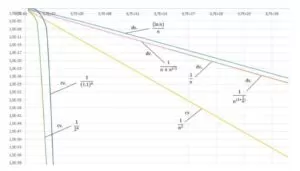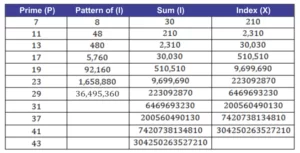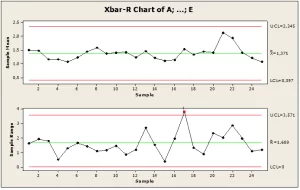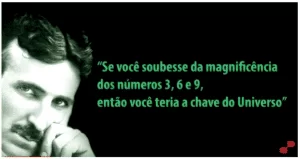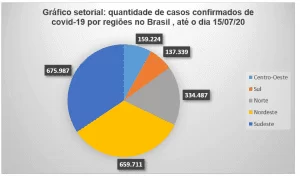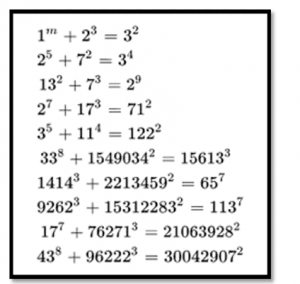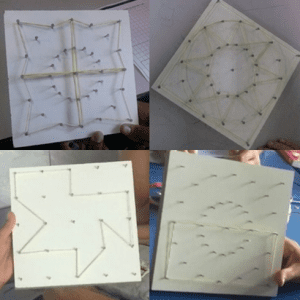ORIGINAL ARTICLE
PEREIRA, Olavo de Carvalho [1]
PEREIRA, Olavo de Carvalho. Empty set considerations in light of the definition of inclusion between sets. Revista Científica Multidisciplinar Núcleo do Conhecimento. Year 05, Ed. 01, Vol. 01, pp. 39-45. January 2020. ISSN: 2448-0959, Access Link: https://www.nucleodoconhecimento.com.br/mathematical-olympiads/empty-set
ABSTRACT
The article analyzes the empty set from the point of view of its inclusion in any set that has element, reaching the conclusion divergent from the established, that is, that the empty set cannot be contained in any set that has elements.
Keywords: Empty set, set theory.
1. INTRODUCTION
The present article aims to review the statement that the empty set is a subset of any set that has an element, in the light of what is insgiven of definitions contained in the theory of sets, in order to establish its correct formulation, pointing out the real situation to be considered.
1.1 EMPTY SET
Before starting with the definitions that will appear in this article, we emphasize that all of them, as well as the theory exposed here, have the same writing in the books of Giovanni and Bonjorno (2005), Lima (1978), Dante (2011) as well as Iezzi and Murakami (1991):
“It is called an empty set that has no element. The usual symbol for the empty assembly is Ø. We get an empty set when we describe a set through a logically false P property. (p. 22A)”
According to the current teaching of mathematics, here in Brazil, the empty set, which is the set that has no element, is contained in any set that has element (Ø⊂ A, whatever set A).
The include relationship states that a set A is contained in a set B(A⊂B) when all elements of A are also elements of B, that is, when A is a subset of B.
Example: be A={a,b,c} and B={a,b,c,d,e}
The elements of A are a, b, and c;
The elements of B are a, b, c, d and e;
We see that the elements of A – a, b and c- are elements of B. But, not only that, we observe that some elements of B – a, b and c- are elements of A.
In conclusion: If A ⊂ B, then A and Bhave element in common, in the given example, elements a, b, and c that are elements of A and B at the same time.
From the definition of inclusion we can conclude that if all elements of A are elements of B, then some or some elements of B are elements of A (precisely those elements of B that are also the elements of A).
Conclusion: To include a set A in a set B it is necessary that both have element or elements in common (in fact, A and B must have all elements of A in common).
We observed that the definition of inclusion between sets “requires” that they have element.
Reinforcing: If A is contained in B (A ⊂ B), then A and B have element in common.
Using the definition of inclusion over the empty set, we conclude that it cannot be contained in any set that has element, because it would have to have some element in common with the set in which it was contained, which cannot occur because it has no element.
Conclusion: The empty set cannot be contained in any set that has element, that is, the empty set cannot be a subset of any set that has the element.
Reinforcing: Ø ⊄ A, whatever A ≠Ø.
The arguments used to justify the prevailing position in mathematics teaching, besides not considering the consequence of the definition of inclusion above, are also not supported by other results resulting, also, from the definitions present in the theory of set.
Below, we will expose such arguments with the corresponding criticism.
We know that a set A, as much as it has elements in common with a set B, if at least one of the elements of A does not belong to B, we say that A is not contained in B.
Example: if A={a, b, c, d, e} and B={a, b, c, d, f, g, h, i}
The elements of A, except element e, belong to set B, so in this case, as one of the elements of A does not belong to B, we have that A is not contained in B (A⊄B).
So, data A and B sets are not empty, if the answer to the question “is there any element of A other than element of B?” is yes, we conclude that A is not contained in B; otherwise, that is, if the answer is no, we conclude that all elements of A are elements of B and, in this case, A is contained in B.
Using the same interrogative expression, now with the empty set, we cannot draw the same conclusions, that is, if we ask the question “is there any element of the empty set other than element of B?” we will have “no” as an answer, simply because the empty set has no element.
This fact can never lead us to conclude, as in the case above where both sets had elements, that all elements of the empty set are elements of set B, because the empty set has no element.
We could also ask the following question: “Is there any element in the empty set that is an element of B?”; as the answer to this question is also negative, we can conclude, also in this case, that the empty set cannot be contained in B.
Moreover, by the very definition of an emptyset, we cannot speak of an element in relation to such a whole.
Question mark like the one that was made above becomes meaningless when related to the empty set.
Strictly speaking, the expression “is there any element of the empty set that is (or is not) element of B?” would have to be divided into two parts: 1) “is there any element of the empty set” and 2) “that is (or is not) element of B?”.
The answer to the first part 1) is no, since, in relation to the empty set, we cannot talk about element.
Once the first part is answered, the second is meaningless because we can no longer speak of “element”.
Another definition of set theory says that two sets A and B are disjointed when they have no element in common, that is, when the intersection between A and B is equal to the empty set:
If A∩B =Ø, then A and B are distogethered.
Example: A={a, b, c} and B={d, and, f, g}
We see that A and B have no element in common.
This means that there can be no inclusion relationship between A and B, rather, A cannot be contained in B, nor can B be contained in A.
If A∩B = Ø → A ⊄ B and B ⊄ A
We know from the set theory that the intersection between the empty set and a set B, not empty, any is equal to the empty set.
Ø ∩ B = Ø
Strictly speaking, we should only compare set that has element with set that has element, and not set that has element with the empty set, which has no element.
So, along with the definition of disjoint sets, we can say that the empty set and set B are distogether. This means, then, that the empty set cannot be contained in B because it has no element in common with B.
If Ø ∩ B = Ø → Ø ⊄ B
We see this conclusion of the set theory itself underpines the fact that the empty set cannot be a subset of any set that has an element.
Now let’s look at the empty set from another angle, when it is contextualized in a given set.
From what was seen above, if A and B are sets such that A ∩ B = Ø and as Ø ∩ B = Ø, we can identify set A as an empty set for set B and vice versa, in the sense specified in the example below when it comes to numerical sets.
Example. If A={a, b, c} and B={d, and, f, g}, such as A ∩ B = Ø, we can say that A is an empty set for B and vice versa, that is, that the elements of set A do not belong to set B and that the elements of set B do not belong to set A, and therefore if we solve an equation in set A and get as a result an element from set B, in this case B would be an empty set for A, exactly as described in the following example with numeric sets.
Another example, if we are working on the set of natural numbers, and if our context is the Set N and we want to solve the equation x + 5 = 0, we know that the answer -5 does not belong to the set in question. So we say the solution is empty. We can then, without prejudice to any of the logic of the definition of empty set, applied, in this case, to the context of the natural, to say that -5 belongs to the empty set.
Generalizing, any number outside the context of the naturals will be considered as belonging to the empty set. Thus, negative integers, rational and irrational, that is, the union of these sets will form the empty set of naturals. Thus, we realize that the empty set, in this case, in the context of natural numbers, from the perspective of being empty because it has no element belonging to the natural, has infinite elements.
If the context were the whole of the integers, the empty set of solutions would be the union of the rational, except the integers, with the irrational and would have, in this case, infinite elements.
And so on, as we enlarge the set, the corresponding empty set is reduced until we reach the set of complexes for which the empty set must be really empty, containing no element.
Now, returning to the given example, x+5 = 0, in the set of naturals, having as answer -5 belonging to the void; if the empty set were a subset of any set, then -5 would belong to the natural ones, and with that, the solution would not be empty, that is, belonging to the empty set.
By this we meanthat, if the empty set were subset of some set, it would have all its “elements” in common with that set, that is, its elements would belong to that set, and with that, it would not be empty set.
2. CONCLUSION
In the above we show that the empty set is not contained in any set that has element.
The thesis was based on the established theory itself, not using anything strange to justify it.
We report this observation in order to correct the topic that composes the fundamentals of mathematics, as well as to confer consistency to it.
The results resulting from this conclusion should be reassessed.
3. REFERENCES
DANTE, Luiz Roberto, Matemática, Volume Único, 2011.
GIOVANNI, José Ruy e BONJORNO, José Roberto, Coleção Matemática Completa, 1ª Série, Ensino Médio, 2005.
IEZZI, Gelson e MURAKAMI, Carlos, Fundamentos de Matemática Elementar, volume 1, 1991.
LIMA, Elon Lages. Curso de Análise, vol. 1, 1978.
[1] Bachelor’s Degree in Mathematics from the University of Brasília.
Submitted: November, 2019.
Approved: January, 2020.

